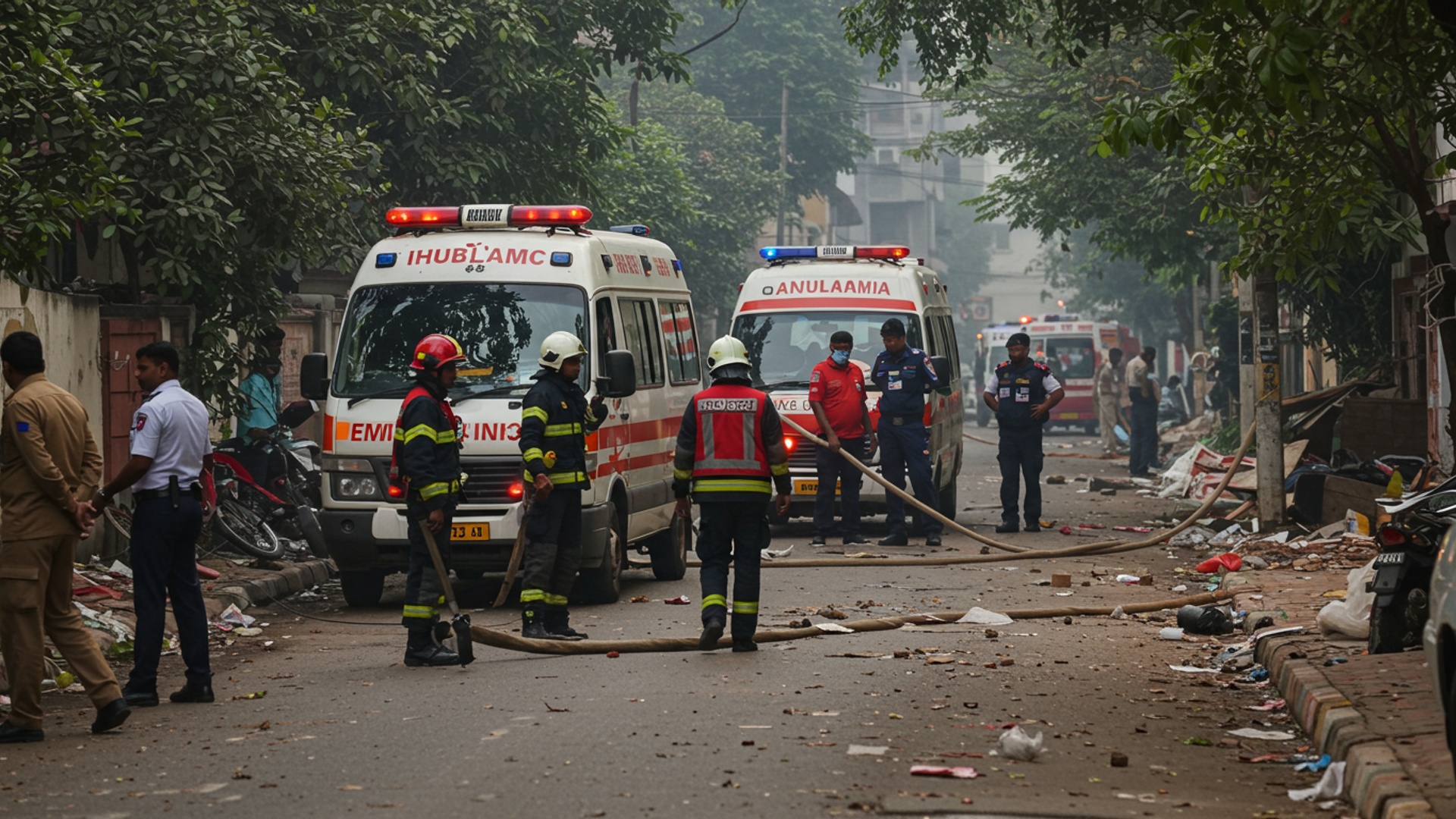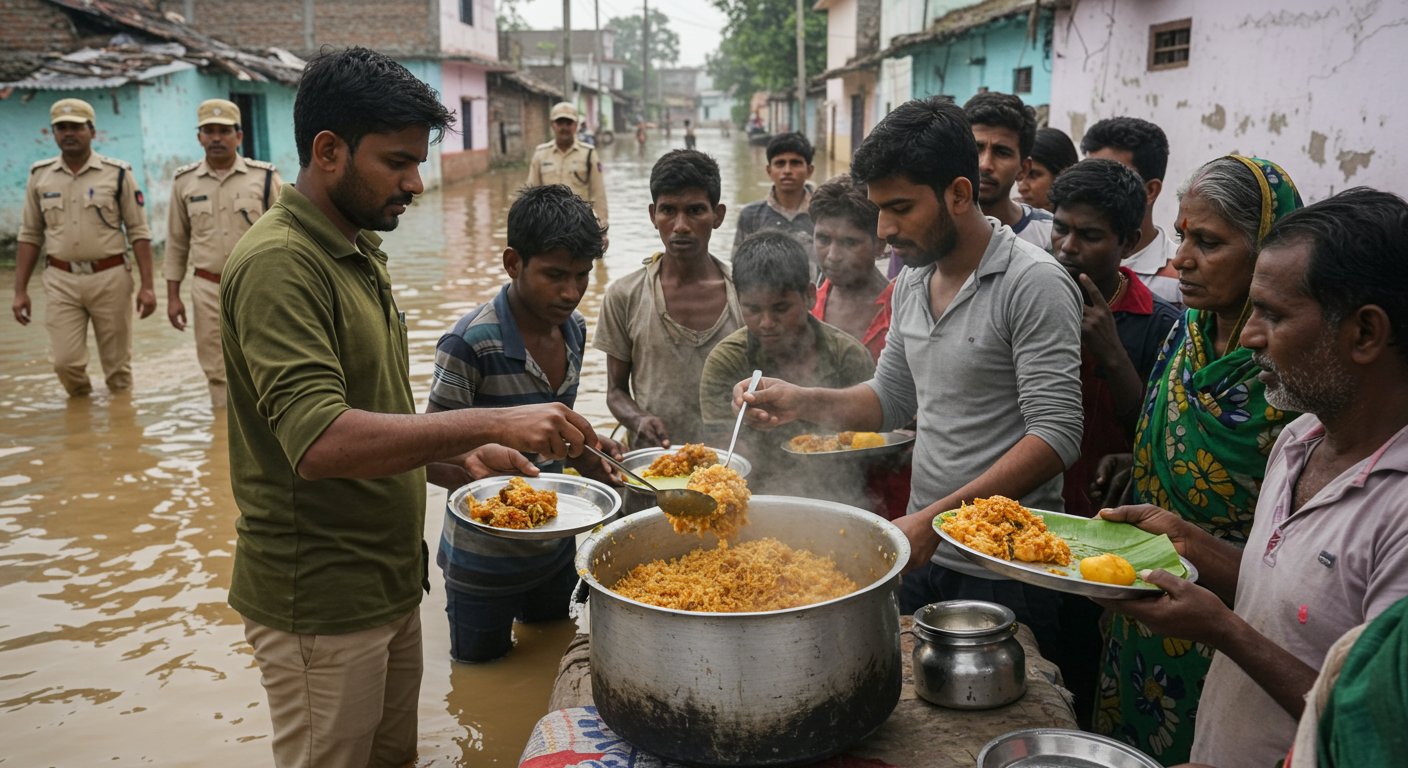A powerful cylinder blast rips through a quiet Bengaluru neighborhood, killing one young person and hurting many others. The explosion, happening in a local home, sends shockwaves through the area as rescue workers quickly arrive. Emergency teams are working to help those affected, while police start looking into what made the cylinder explode. This terrible event leaves local people worried and asking how such a disaster could happen.
Immediate Impact and Casualties
A powerful gas cylinder explosion ripped through a residential area in Bengaluru, specifically the Chinnayanapalya area near Wilson Garden, on the morning of August 15, 2025. The blast, which occurred on Independence Day, resulted in the tragic death of an eight-year-old child named Mubarak. The incident caused widespread panic among local residents and left a trail of destruction in the densely populated locality.
Beyond the single fatality, the explosion left a significant number of people injured. Initial reports indicated that more than 12 people sustained serious injuries. Other accounts detailed at least seven injured individuals, with some reports specifying eight injured, including women and children, two of whom were in critical condition. All those injured were quickly transported to nearby hospitals for urgent medical attention. They received treatment at facilities such as Sanjay Gandhi and Jayanagar General Hospitals. some were admitted to Victoria Hospital.
The force of the blast was so immense that it caused extensive structural damage to homes in the area. The roof and walls of the house where the explosion took place collapsed completely. The destruction was not limited to the immediate site; the shockwaves from the blast impacted multiple nearby structures. Between 8 to 10 neighboring houses suffered severe damage, with their roofs and walls destroyed. Another report mentioned that as many as 17 homes in the working-class neighborhood were damaged, including several with asbestos sheet roofs that were completely destroyed. Glass shards from shattered windows were scattered widely across the affected area, further indicating the intensity of the explosion.
Emergency Response and Rescue Operations
Following the deafening sound of the blast, which residents reported as causing tremors in the surrounding area, emergency services were immediately alerted. The Adugodi police and the fire department received an emergency call around 8:23 AM. Within minutes, two fire engines were dispatched and quickly arrived at the scene to begin managing the chaotic situation.
Rescue and relief operations were initiated without delay. Personnel from the Fire and Emergency Services, local police. the National Disaster Response Force (NDRF) were actively engaged in clearing the large amount of debris. Their primary focus was on searching for and rescuing any individuals who might have been trapped under the collapsed structures. The coordinated efforts aimed to ensure that all victims received prompt medical aid and to secure the site to prevent further harm.
Senior officials from various departments also arrived at the blast site to oversee the relief operations and assess the damage. Deputy Commissioner of Police Sara Fatima and other high-ranking officers were present to evaluate the situation firsthand. The Bengaluru City Police Commissioner also visited the location, emphasizing the seriousness of the incident and the ongoing efforts. Moreover, the Chief Minister of Karnataka, Mr. Siddaramaiah, visited the site in Wilson Garden, providing a statement and announcing support measures for the affected families.
The swift response by emergency teams played a crucial role in managing the immediate aftermath of the explosion. They worked to douse any potential fires, clear pathways. facilitate the movement of injured persons to hospitals. The dedication of these teams was vital in a situation where extensive damage had occurred across a residential block.
Investigation Underway
Authorities have launched a thorough investigation to determine the exact cause of the devastating explosion. While a gas cylinder leak is currently being considered as the initial suspected cause, officials have stated that other possible reasons are also being looked into. Investigations into such incidents typically involve a detailed examination of the scene to collect evidence and grasp how the blast occurred.
Experts will review the structural damage, which includes walls pushed outward and shattered windows, to map the movement of the pressure wave and help identify the ignition point of the fuel-air mixture. Samples of gases, vapors. fine particles may be gathered for laboratory analysis. Investigators will also look at various potential ignition sources, such as electrical wiring or appliances, to interpret what might have triggered the explosion.
In many cylinder blast cases, factors like faulty connections, worn-out parts, or improper handling of cylinders can lead to gas leaks. If gas leaks and mixes with air in a closed or poorly ventilated space, it can form a combustible mixture. This mixture can then ignite from a small spark, leading to a sudden and powerful explosion. LPG is heavier than air, so it tends to settle towards the ground, making proper ventilation critical.
Police and fire department officials will coordinate their efforts to ensure a comprehensive investigation. They will gather witness statements and examine any fragments of the cylinder found in the debris. The aim is to ascertain the probable cause of the incident, evaluate the initial response. identify any areas for improvement in safety measures to prevent similar incidents in the future.
Community Impact and Support
The cylinder blast has severely impacted the lives of residents in the Chinnayanapalya area. Many families have been left without their homes or with heavily damaged properties, creating a sudden need for shelter and support.
The sound of the explosion was so loud that it caused tremors across the neighborhood, startling residents and underscoring the severity of the event. One eyewitness recounted hearing a “loud bang” followed by a cloud of dust and debris, describing the aftermath as a “very sad sight.” The emotional toll on the community, especially those who lost a loved one or their homes, is significant.
In response to the tragedy, authorities have announced measures to support the affected families. The Chief Minister of Karnataka stated that a compensation of Rupees 5 lakh has been announced for the family of the child who died. Moreover, the government has committed to bearing the cost of treatment for all the injured individuals, ensuring they receive necessary medical care without financial burden.
Beyond immediate relief, instructions have been given to repair the damaged houses, which will be a crucial step in helping affected families rebuild their lives. Local residents, including a paanipuri vendor and a decor management store owner, shared accounts of their businesses and belongings being damaged, highlighting the economic impact on the working-class neighborhood. Community members are also providing support to their neighbors during this difficult time.
Safety Measures and Awareness
This tragic incident brings to light the critical importance of adhering to safety measures when handling domestic gas cylinders. LPG (Liquefied Petroleum Gas) cylinders are commonly used in households across India as a primary cooking fuel. But, improper handling or faulty equipment can lead to severe accidents.
Safety guidelines emphasize several key practices to prevent such explosions:
- Proper Storage: Gas cylinders should be stored in well-ventilated areas, away from direct sunlight, heat sources. flammable materials. They should always be kept upright.
- Regular Checks: It is essential to regularly check the cylinder, hose. regulator for any signs of leaks, wear, or damage. A simple soap water technique can be used to detect leaks.
- Authorized Purchases: Cylinders, regulators. hoses should always be purchased from authorized distributors and must be ISI-marked (Bureau of Indian Standards) to ensure they meet safety standards.
- Valve Vigilance: The gas supply knob on the regulator should always be turned off when the cylinder is not in use, even for short periods.
- Ventilation: Ensuring proper ventilation in the kitchen by keeping windows and doors open helps to disperse any gas that might leak, as LPG is heavier than air and settles on the floor.
- Emergency Response: In case a gas leak is suspected, do not panic. Immediately turn off the regulator and burner knob, open all doors and windows, extinguish all flames. do not switch on or off any electrical appliances, as sparks can ignite the gas. Contact your gas distributor or emergency services.
Reports suggest that many LPG accidents are preventable and are often linked to negligence, carelessness, or a lack of awareness about safe handling. It is crucial for people to be informed about the safe use of LPG cylinders to minimize the risk of such devastating incidents. Continued awareness campaigns and adherence to safety protocols are essential steps to protect lives and properties from the dangers of gas explosions.
![]()










